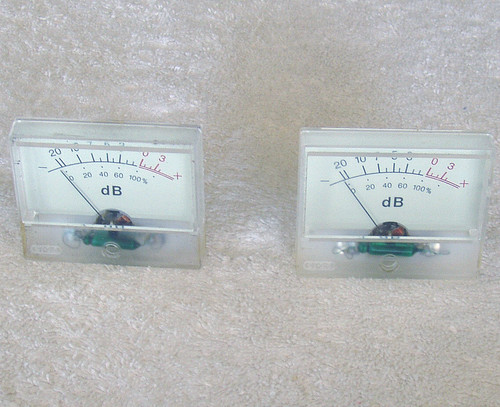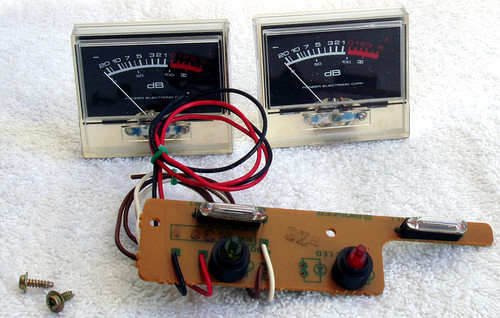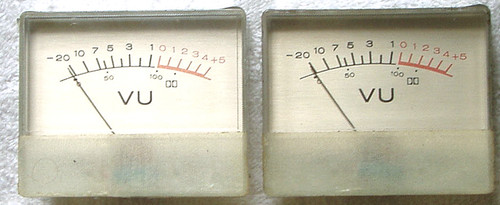BACKGROUND:
PYE were originally a British company, their products were aimed at the professional broadcast market and they were a well established "name" in that industry until around the mid 1980's when the company was "divested" with Philips picking up a number of their products but for the consumer, products were then produced in the PYE "name only", being manufactured in Taiwan i.e made to a consumer "price point"
HERE is a great wealth of information about PYE UK, the birth of the company and their progression through the years, with a number of interesting articles and photographs.
These analog VU meters were extracted from a CD60 "HiFi" Cassette machine produced under the name PYE in the 1980's. I seriously doubt anyone is actually going to restore an old PYE consumer model piece of equipment BUT think laterally, these meters are actually pretty nice and readily adaptable to other equipment - this is the purpose of my offering these, so that they can be pressed into service in other equipment however if someone wanted to actually retro fit a CD60 with these meters, I have left the PCB and wiring intact!
Removal of the meters from the PCB is a straightforward task, desoldering 4 pins for each meter and hey presto, it is free from the board!
KUOTIANG (TAIWAN) - VU Meters (2)
Country of origin: Taiwan
Both meters have a crystal clear "snap on" front face and identical scales marked as dB LEVEL with the scale running from -20dB thru to +4dB
There is no manufacturing trade names or other markings, which is good when fitted into other equipment.
The only difference between the two front faces is that one has "1" stamped into the plastic and the other ... wait for it ... has "2" stamped into the plastic - these numbers don't actually matter from a visual aspect because they are located right down near the meter lamp assembly, hidden from the users view.
The DC resistance of each meter movement coil is 600 Ohm
The lamps ... alas they are dead (open circuit) but I had these meters when they were working and the soft Green glow is magic, when the lamps worked! The trick will be to obtain a similar lamp, long filament style with either a Green or Orange coating so that the display will look really great. The lamps use wire pigtails and are soldered onto posts, not a difficult task to remove the old lamp and fit new ones.
I have "refreshed" the clear tape that holds the front face securely but the lower tape has only been temporarily fitted because it will need to be lifted once again to replace those lamps.
SPECIAL NOTE: These meters are VERY sensitive to static charging, I noticed that even during normal handling, the "rest position" was sometimes sitting at -10dB but then it dawned on me, a static charge has built up when I handled the meter, so just "grounding or discharging" the front face momentarily and the pointer drops right back to -20dB. I am assuming this is also part of the reason that the meter has been sealed with an Aluminium metal tape around the edges.
DIMENSIONS:
Meter front face: 55.25mm x 48mm
Meter viewing window (the part which is visible to the user) 49mm x 31mm
Meter main body thickness is 11.25mm
All external connections are on one side, creating something like a mounting block, and this sits on the back of the lower body area and measures 32.65mm x 10.5mm x 5.25mm thickness
COSMETIC CONDITION:
Both front faces are free of scratching or marks
Very clean
Both pointers move freely (no sticking) and have a slightly dampened movement.
Both meters have the ability to adjust the "zero" position (slot head screw) but I have not needed to change this and the screw does have some material fixing the adjustment in position so it's best to leave well alone.
Please don't forget ... the lower piece of tape (just plain clear cellotape) is only temporarily fitted so that access to replace the lamps is easier. Once the lamps are replaced & tested, secure the lower section of the front face with new cellotape (not a difficult thing to do, just fiddly)
I have now packed this twin meter unit into a nice bubble-wrap 'bed' then created a small but strong box so that it travels safely ...











